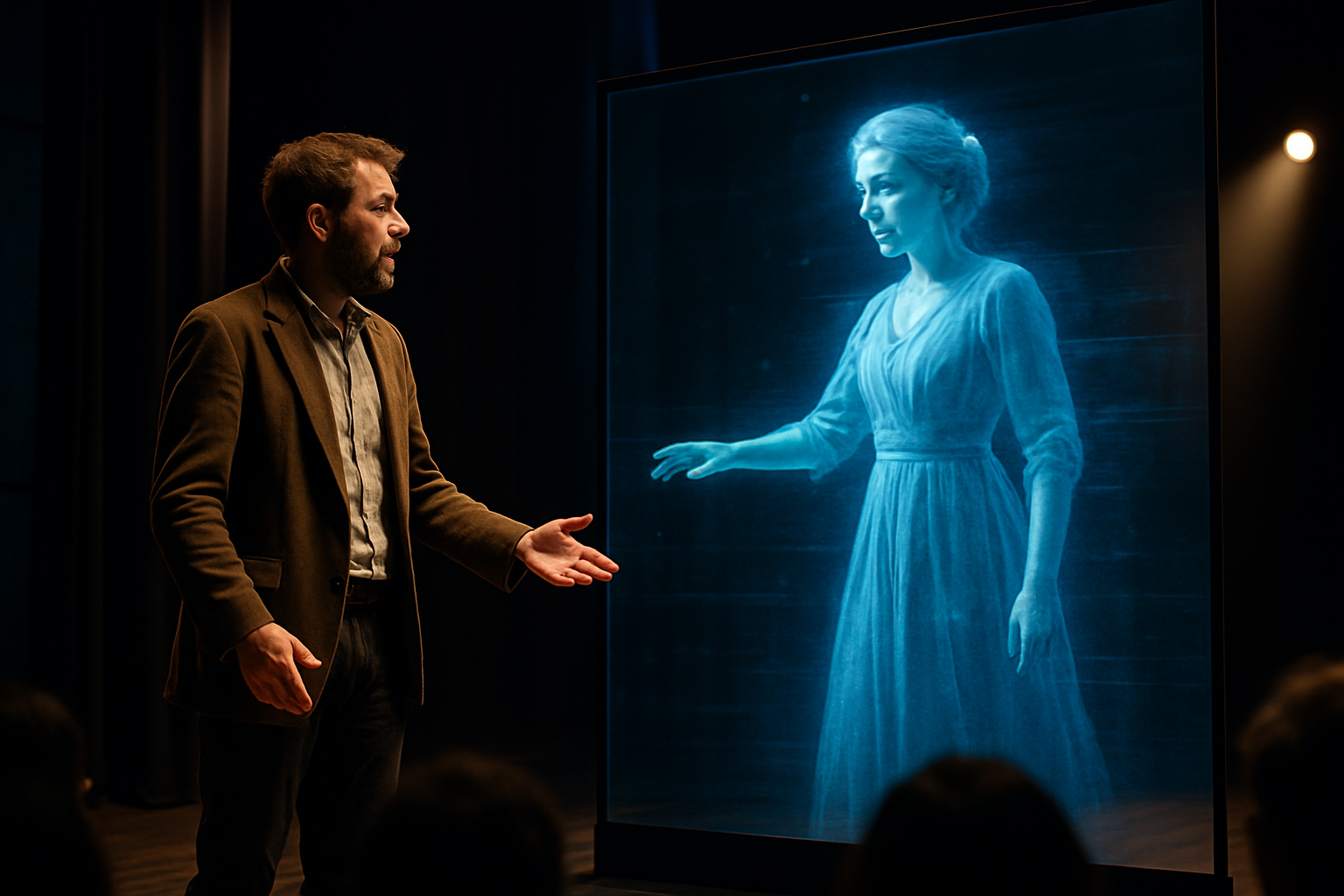Holographic Cinema: The Next Frontier in Immersive Storytelling
In a world where digital innovation continually reshapes our entertainment landscape, holographic cinema emerges as a groundbreaking frontier. This cutting-edge technology promises to revolutionize the way we experience movies, blurring the lines between reality and fiction. As filmmakers and tech giants collaborate to bring this visionary concept to life, audiences stand on the brink of an unprecedented cinematic revolution that could redefine the very essence of storytelling.

The concept of holographic cinema combines the immersive nature of virtual reality with the communal experience of traditional movie-going. Unlike VR, which isolates viewers in individual headsets, holographic cinema aims to create a shared, three-dimensional experience that can be enjoyed by an entire audience simultaneously.
Technological Breakthroughs
Recent years have seen significant strides in holographic display technology. Companies like Light Field Lab and Looking Glass Factory have made substantial progress in creating large-scale holographic displays capable of projecting high-resolution, full-color 3D images without the need for special glasses or headgear.
These advancements rely on a combination of light field technology, which captures the direction and intensity of light rays, and advanced computational algorithms that process and render complex 3D scenes in real-time. The result is a stunningly realistic holographic image that appears to float in mid-air, visible from multiple angles.
Reimagining the Cinematic Experience
Holographic cinema has the potential to transform storytelling in profound ways. Directors and cinematographers are exploring new narrative techniques that take advantage of the medium’s unique capabilities. Instead of being confined to a flat screen, scenes can unfold in three-dimensional space, allowing viewers to perceive depth and perspective in ways previously impossible.
This new format opens up exciting possibilities for interactive storytelling. Audience members might be able to choose different viewpoints within a scene or even influence the course of the narrative through collective decision-making. The line between spectator and participant could become increasingly blurred, creating a more engaging and personalized cinematic experience.
Challenges and Limitations
Despite its promise, holographic cinema faces several hurdles before it can become a mainstream reality. The technology required to project large-scale, high-quality holograms remains prohibitively expensive and complex. Current prototypes are limited in size and resolution, making them unsuitable for full-length feature films or large audiences.
Additionally, creating content for holographic displays presents unique challenges. Filmmakers must rethink traditional cinematography techniques and develop new methods for capturing and rendering three-dimensional scenes. This requires significant investment in both equipment and training for cast and crew members.
The Future of Entertainment
As holographic technology continues to evolve, its potential applications extend far beyond cinema. Museums are exploring holographic exhibits that bring historical figures and artifacts to life. Live performances could incorporate holographic elements, allowing for spectacular visual effects and virtual collaborations between artists across the globe.
The convergence of holographic cinema with other emerging technologies, such as artificial intelligence and the Internet of Things, could lead to even more innovative forms of entertainment. Imagine interactive holographic games that transform your living room into a fantastical landscape or educational experiences that allow students to step into historical events or scientific phenomena.
Industry Impact and Economic Implications
The advent of holographic cinema has the potential to reshape the entire entertainment industry. Traditional movie theaters may need to undergo significant renovations to accommodate holographic projection systems. This could lead to a new era of premium cinema experiences, with higher ticket prices reflecting the increased production costs and technological investments.
Content creation for holographic cinema will likely spawn new specializations within the film industry, from holographic cinematographers to 3D environment designers. As the technology matures, we may see the emergence of dedicated holographic production studios and distribution networks.
The economic ripple effects could extend to related industries as well. Consumer electronics manufacturers may develop home holographic entertainment systems, while advertisers explore new dimensions of engagement through holographic marketing campaigns.
Ethical Considerations and Social Impact
As with any transformative technology, holographic cinema raises important ethical questions. The hyper-realistic nature of holograms could blur the line between reality and fiction in ways that may be psychologically impactful, especially for younger viewers. There are also concerns about privacy and consent, particularly when it comes to creating holographic representations of real people.
On a societal level, the immersive quality of holographic entertainment could influence how we interact with media and each other. Will the allure of increasingly realistic virtual experiences lead to a further retreat from physical social interactions? Or will the communal nature of holographic cinema foster new forms of shared cultural experiences?
Conclusion: A New Chapter in Visual Storytelling
Holographic cinema stands at the threshold of a new era in entertainment, promising to redefine our relationship with visual media. As technological hurdles are overcome and creative minds explore the possibilities of this new medium, we can anticipate a future where stories literally leap off the screen and into our world.
While challenges remain, the potential for holographic cinema to revolutionize storytelling, education, and cultural experiences is undeniable. As we venture into this brave new world of immersive entertainment, one thing is certain: the way we perceive and interact with visual narratives will never be the same again.





